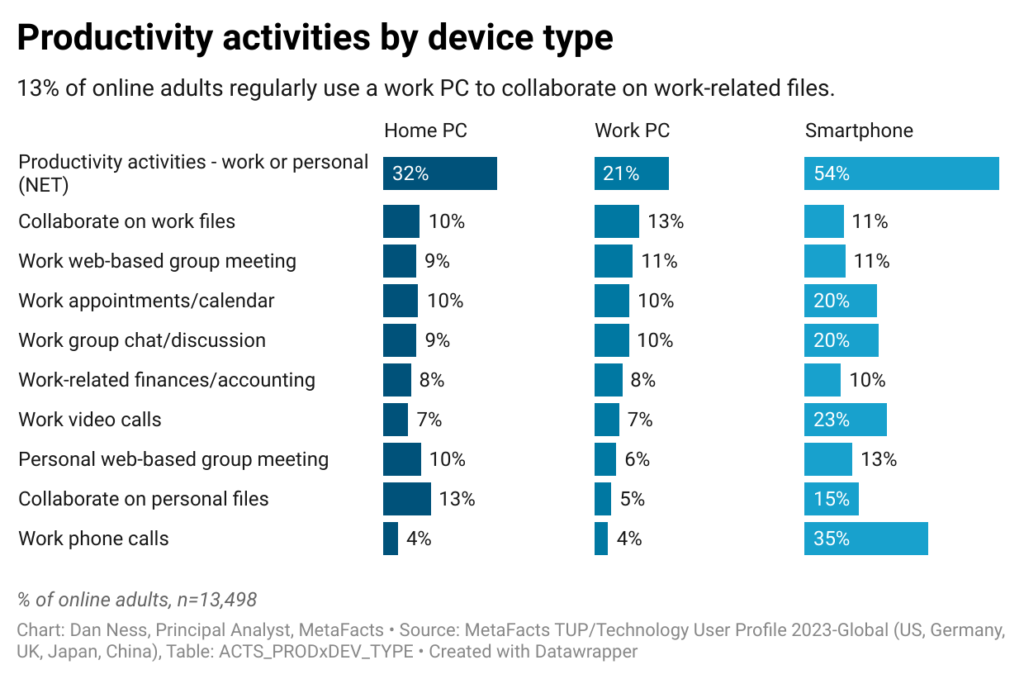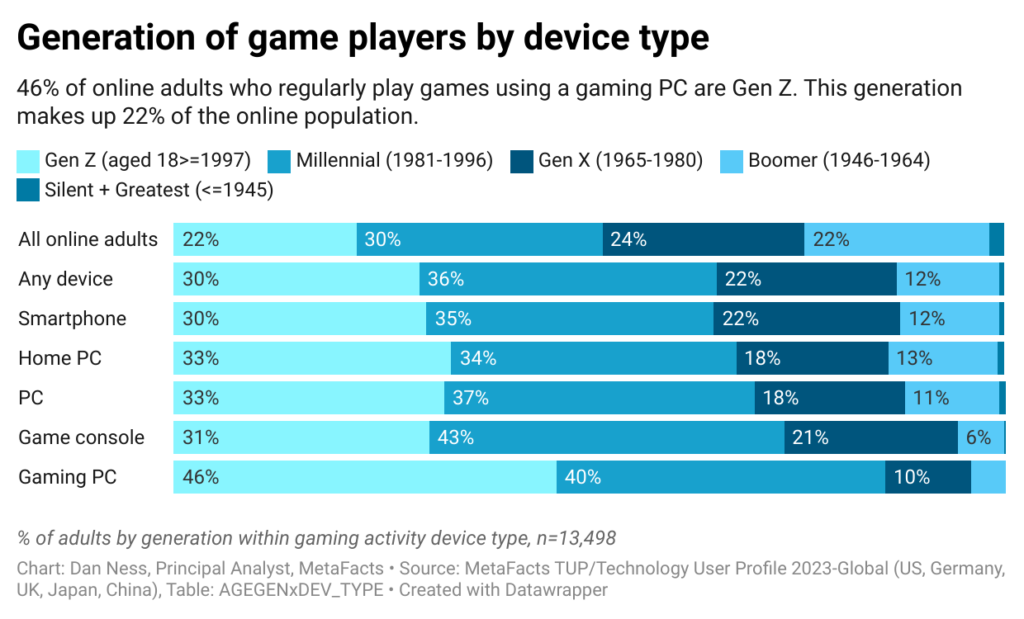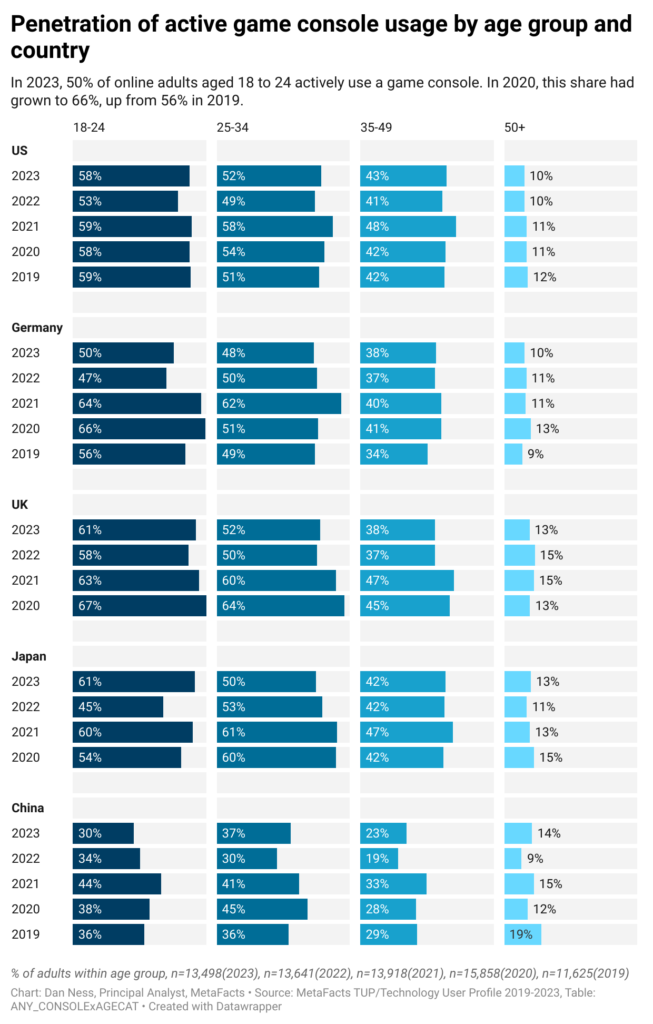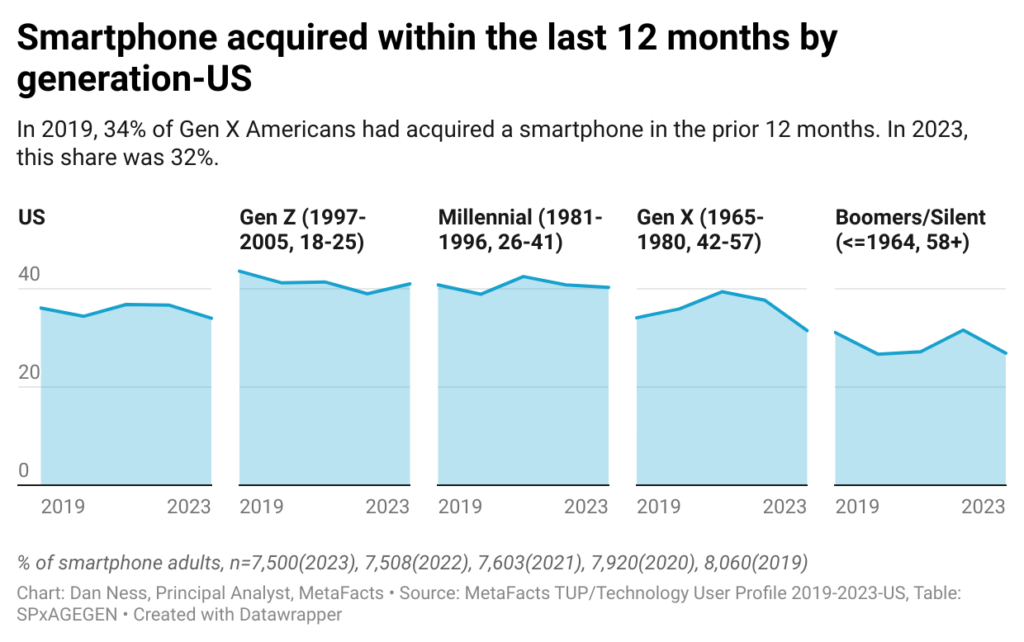Dan Ness, Principal Analyst, MetaFacts, January 26, 2024
Summary
People use connected devices to be productive, actively engaging in a broad set of activities spread among their various devices. The use of smartphones for productivity is growing while the use of computers has flattened or is even in decline. Younger adults have embraced productivity activities, although Gen X and millennials use different types of devices to get things done.
This MetaFAQs reports on the number and percentage of online adults who regularly perform a set of productivity activities, from work file collaboration to appointment scheduling. These results are further split by mean age and generation and trended by age and device type for Americans from 2020 through 2023.
Smartphones are the leading productivity tool
- More online adults use smartphones for productivity than either home computers or those provided by employers
- Only one productivity activity – collaborating on work files – is done by more adults with work PCs than with smartphones, and in this specific case, the difference is nominal
- Across home PCs, regularly collaborating on personal files stands out as a top productivity activity
- The most robust productivity activities using smartphones are oriented toward communication, allowing adults to stay in touch with coworkers





